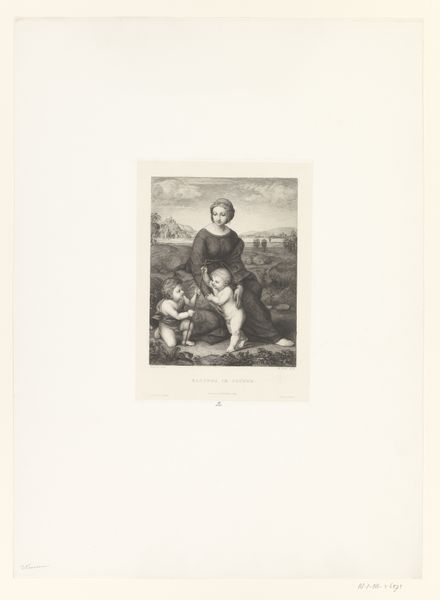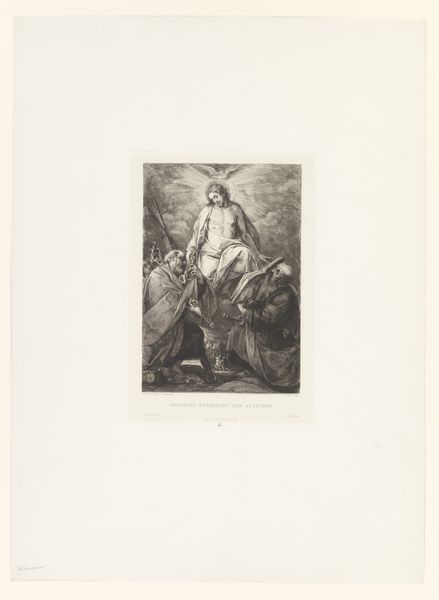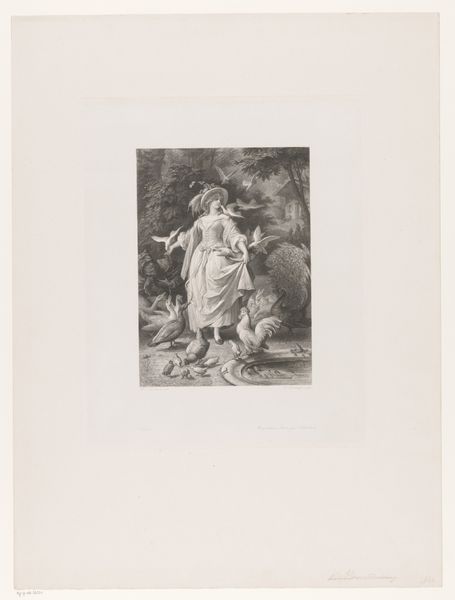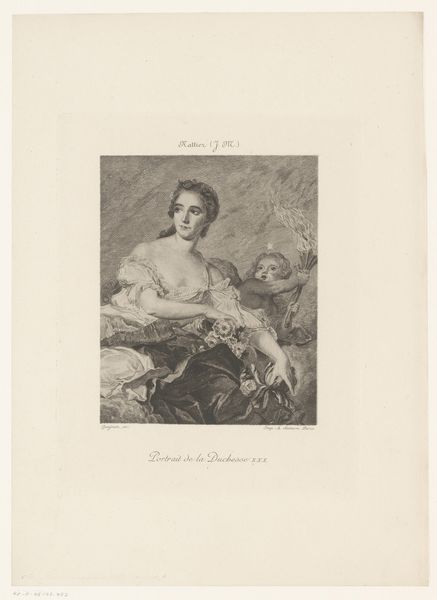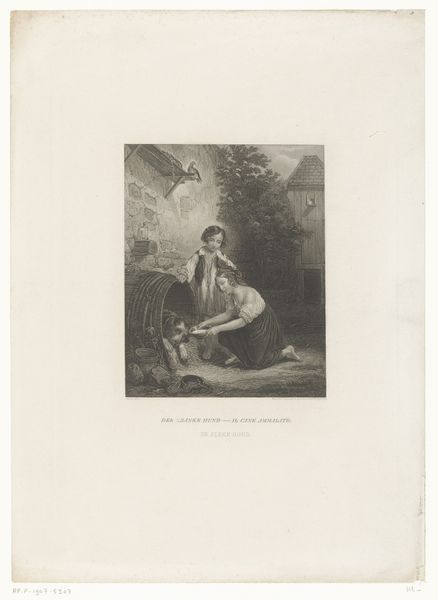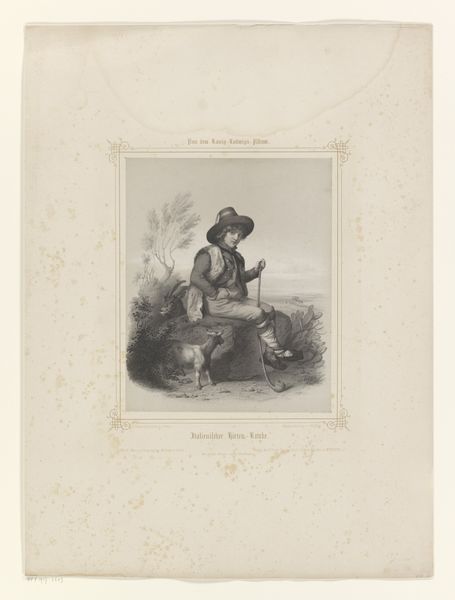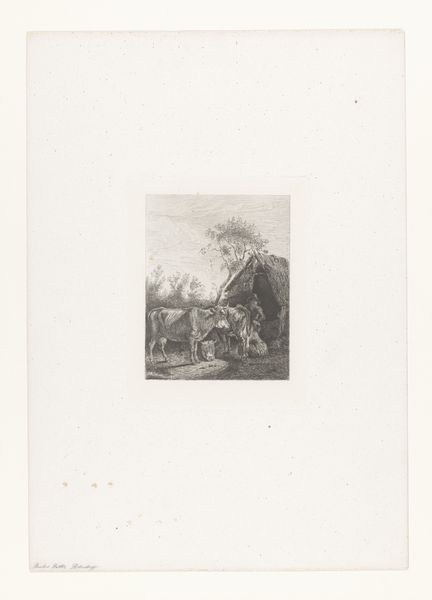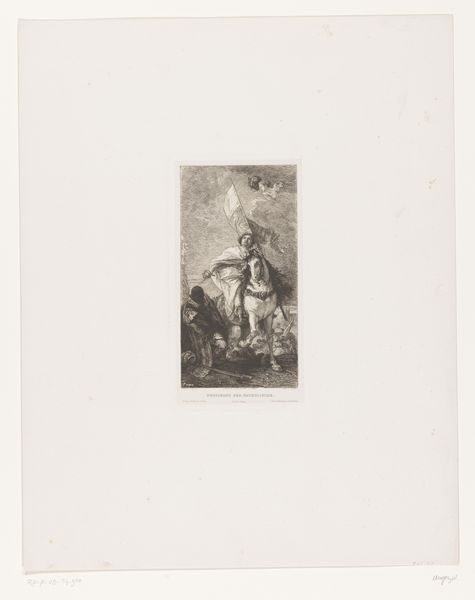
drawing, print, engraving
#
portrait
#
drawing
# print
#
landscape
#
pencil drawing
#
engraving
Dimensions: height 320 mm, width 246 mm
Copyright: Rijks Museum: Open Domain
William Unger created this reproduction titled 'Johannes de Doper' using etching techniques. Observe the image's contrasting tonal gradations that build depth and dimension. The composition centres on a young John the Baptist, his form softened through the delicate gradations of light and shadow. The textural interplay between the boy's skin, the lamb's wool, and the surrounding foliage is carefully rendered. Etchings like this one are intriguing due to the interplay between precision and artistic expression. The semiotic reading of this image considers the lamb as a symbol of innocence and sacrifice, and John's staff with a banner as a symbol of his prophetic mission. This iconography is part of a larger cultural narrative deeply entrenched in Western art and religious symbolism. Consider how Unger used the etching process to make this reproduction. The formal qualities of the etching—its precise lines and careful tonal modulations—serve not only an aesthetic purpose but also reflect broader cultural and philosophical narratives of faith, innocence, and sacrifice. As such, it invites ongoing interpretation and re-evaluation.
Comments
No comments
Be the first to comment and join the conversation on the ultimate creative platform.
